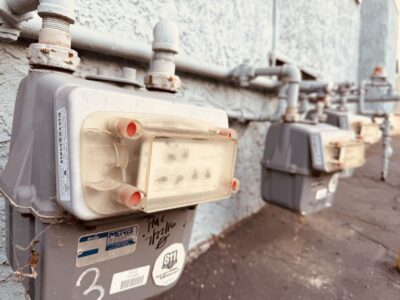The California Legislature Halftime Report
In a year defined by affordability and climate crises, several bills aimed to alleviate pressures on both fronts are advancing in the Legislature.
Thank you for joining me for the California Legislature Halftime Report, it is an exciting time of change with many updates to share. A new Senate President pro Tempore was just selected. I’m pleased to share that it is Senator Monique Limón (District 21), who I am personally pleased about this because she is my representative and she has done a remarkable job for our community and our state, but most importantly for this post, it is wonderful news because Senator Limón is a fierce environmental champion.
The house of origin deadline passed on Friday June 6, meaning bills that are advancing have cleared their first chamber. These bills will now be heard in the second house through September 12. The Governor has one month to take action on the bills that survive thereafter. In other words, we are halfway there.
At the same time, the all too important California Budget process is taking place, as the Budget Bill came into print in the early hours of Tuesday June 10. Lawmakers are busy working on the budget, trying to navigate a high budget shortfall and lessen negative impacts for their constituents.
Backdrop for Environmental/Climate Bills
If the 2025 legislative year to date could be summed up in one word, it would be “affordability.” The state, and its residents, are dealing with an affordability crisis. With Californians facing rising insurance and gas prices, on top of broader cost increases, many are feeling the squeeze. Californians are looking to their legislators to alleviate the effects of this crisis and set California on a road of more prosperity. Climate advocates have been voicing the opinion that if we proactively and boldly addressed our climate crisis, it would cause relief on the affordability front.
The climate advocate community generally is disappointed with where we are at the halftime, with leaders such as Mary Creasman of California Environmental Voters voicing the sentiment that “California is failing to meet the moment.” She went on in a press release to state, “Too many critical affordability, health, and economic opportunity solutions—that would have cleaned up our air, lowered insurance and energy rates, funding our climate resilience and clean energy transition, and helped struggling families access safe drinking water—didn’t even make it to the floor for a vote.” Advocates stress that the halftime marker is a good time to assess goals and priorities, make necessary changes, and make some climate touchdowns come fall.
Polluters Pay Climate Superfund Bills
Proponents and opponents of the Polluters Pay Climate Superfund Bills are using the same messaging to advocate to legislators—that action on this legislation will affect affordability in our state. As an explainer in very simplified terms, “polluters pay” is part of a broader conversation cropping up across the country to have the biggest fossil fuel polluters pay for climate harms and mitigation efforts. There are two identical bills in California on this topic, which are identical, SB684 (Senator Menjivar) and AB1243 (Assemblymember Addis). I’ve discussed these here in an earlier post.
Climate advocates have been calling on lawmakers to pass legislation that would hold polluters, rather than taxpayers and the state, responsible for our climate crisis causing rising insurance costs, rebuilding and infrastructure costs, and more. Opponents have argued that climate mitigation measures mean a reduction in industry and jobs in an already unfavorable economic climate. Supporters and opponents, in the hundreds, have filled the policy committee hearing rooms this session to voice their opinions. Many labor representatives have shown up at the hearings arguing that this legislation will cause industry to leave the state. However, supporters have shown that this idea of pitting environment and labor against one another creates a false dichotomy, and that in reality, these climate mitigation measures would create new, safer, well-paying, sustaining infrastructure jobs. This would relieve the economic pressure felt by so many across the state. While the bills both passed through their policy committee hearings, they have stalled as the authors and coalitions continue conversations with labor and undecided representatives to explain these findings. As a procedural note, since these bills have an Urgency Clause, they were not bound by the June 6th deadline, so we will continue to watch as supporters share this message in an effort to build more momentum.
Climate Bills Advancing at Halftime
Bills aimed to increase our clean energy, cut down on emissions, and create alternatives are on the move. These include Senator McNerney’s SB279 to expand our composting capacity, new Assemblymember John Harabedian’s AB740 to accelerate the use of virtual power plants, and Assemblymember Tasha Boerner’s AB399 to protect and restore blue carbon ecosystems. SB254 also known as The POWER (Policy-Oriented and Wildfire Electric Reimbursement) Program by Senator Becker, which my colleague Denise Grab explains here, is also moving forward.
Climate Bills that Got Sidelined
Some of the notable bills that will not be advancing include Senator Wiener’s SB222, the “Affordable Insurance and Climate Recovery Act” which would have enabled California climate disaster victims to hold polluting companies accountable in the insurance setting. The Pollution Hotspots Solution Act (AB914) by Assemblymember Robert Garcia, which would have created new tools to clean up polluted air also died.
Just because these bills did not advance this year, does not mean they are gone for good. As so-called “zombie bills,” we might see them again in future sessions. This means that if there is a bill that you care about that died, you might want to reach out to the legislator and/or sponsoring organization to voice your support and assistance, as momentum is often built between legislative sessions when deciding to bring something back.
Other Environmental Issues at Play
Legislators are also looking at some bold and broad bills that would fundamentally change CEQA, participating in cap-and-trade reauthorization discussions, and continuing conversations on carbon dioxide removal. Since we are in the first year of a two-year session, it is likely that these topics will continue to play out over the course of the next session as well.
Let me know what you’re watching this session, what you hope makes it to the finish lines, and what you want to see get relegated to the sidelines. I can be reached at ashjian@law.ucla.edu. As always thanks for reading and sharing your thoughts.







Reader Comments